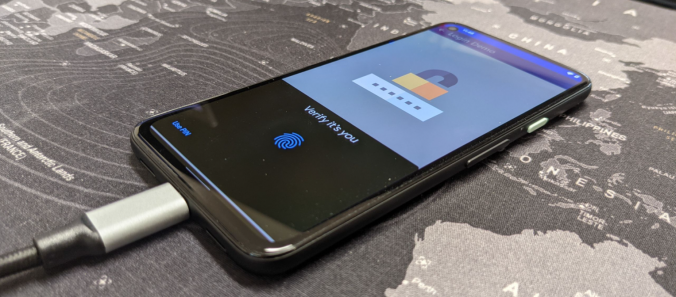During a customer project, we could bypass the biometric authentication mechanism of Ionic Identity Vault on Android, because the Android KeyStore entry does not require any authentication. This post shows how this was done and how it can be exploited.
Compass Security Blog
Offensive Defense
We put more and more sensitive data on mobile devices. For many private conversations we use mobile applications, such as WhatsApp. This smooth access to the data and the Internet provides multiple benefits in our lives. On the other side, new attack vectors are created. Phishing messages do not need to be delivered in an […]
Mobile applications nowadays make heavy use of WebViews in order to render their user interfaces. Frameworks such as PhoneGap / Apache Cordova are even used to implement most of the application’s functionalities using WebViews only.
While native code, both in Android and in iOS, can quickly be analyzed using dynamic analysis tools like Frida, operations performed in WebViews cannot be easily debugged with the same methods.
Have you ever said something and later regretted it? Or written an email to someone and then wished it had not happened? Or sent an SMS message but afterward desired to change its content? Well, replacing the content of previously sent SMSs is actually possible. SMS messages can be constructed in one of two modes: […]
Did Roger Federer call us for some IT-security advice or did Nicolas Heiniger and I find a new way to spoof a caller id? The Human Factor is, and remains, the biggest and most relevant threat to the security of every company. The latest statistics state that “only about 3% of the malware they run […]
Android 7.0 (Nougat) brings a lot of new interesting security features such as: Direct Boot Key Attestation Network Security Configuration Scoped Directory Access Media Server Hardening All of these topics are very interesting from a security perspective. However, in this blog post we will solely focus on Direct Boot. Motivation There are apps, which should […]
Compass Security recently presented its Windows Phone and Windows 10 Mobile research at the April 2016 Security Interest Group Switzerland (SIGS) event in Zurich. The short presentation highlights the attempts made by our Security Analysts to bypass the security controls provided by the platform and further explains why bypassing them is not a trivial undertaking. Windows 10 Mobile, which […]
Up to the iPhone 4, 4 digit passcodes could be brute-forced within a short amount of time – maximum 30 minutes, depending on the passcode. With the iPhone 4s, the Boot ROM vulnerability required to upload a custom RAM disk has been closed thus rendering newer phones immune to this attack. This is where the IP-Box […]
Earlier this month, my colleague Cyrill Bannwart and I held two Compass Security Beer Talk presentations in Bern and Jona about Windows Phone 8.1 security. The slides are now online and cover: Our (unsuccessful) black box attempts to break out from a Windows perspective A review of the implemented security features in Windows Phone 8.1 from a mobile perspective Our findings […]
Web Application Security Training Die Compass Security hat im Moment im Bereich Web Security zwei Kurse ausgeschrieben. Ein Basic und ein Advanced. Unsere öffentlichen Kurse dauern jeweils 2-Tage und bestehen zur Hälfte aus praktischen Beispielen (Hands-On Lab) und zur anderen Hälfte aus Theorie. Wobei die Doing-Aufgaben in der Regel eine Schritt-für-Schritt Anleitung sind. Der Hacker-Angriff […]
© 2025 Compass Security Blog


